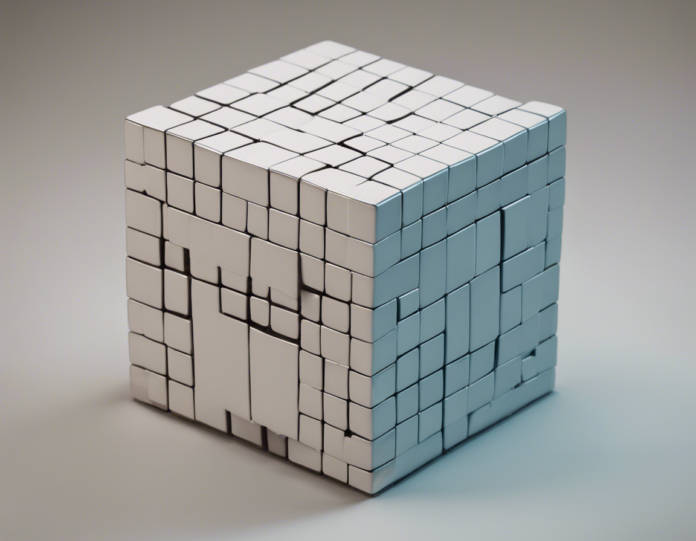When it comes to algebra and mathematics, there are various formulas that can help you simplify expressions and solve equations more efficiently. One of the important formulas in algebra is the cube of a binomial formula, also known as the difference of cubes formula. This formula is used to factorize a binomial expression of the form A^3 – B^3.
In this article, we will delve into the formula for A^3 – B^3 and explore its applications through examples and explanations. By the end of this article, you will have a clear understanding of how this formula works and how it can be utilized in various mathematical problems.
Understanding the Formula for A^3 – B^3
The difference of cubes formula states that for any real numbers A and B, the difference of cubes A^3 – B^3 can be factored as follows:
A^3 – B^3 = (A – B)(A^2 + AB + B^2)
This formula is derived from the algebraic identity:
A^3 – B^3 = (A – B)(A^2 + AB + B^2)
The key idea behind this formula is to recognize and understand the pattern of a binomial raised to the power of 3 and how it can be broken down into simpler factors.
Expanding the Formula: A^3 – B^3
Let’s break down the formula A^3 – B^3 into its expanded form to understand how it works:
A^3 – B^3 = (A – B)(A^2 + AB + B^2)
Expanding the right side of the equation:
= A(A^2) + A(AB) + A(B^2) – B(A^2) – B(AB) – B(B^2)
= A^3 + A^2B + AB^2 – A^2B – AB^2 – B^3
= A^3 – B^3
Therefore, the expansion of the factored form (A – B)(A^2 + AB + B^2) yields the original expression A^3 – B^3.
Applications of the Difference of Cubes Formula
The difference of cubes formula has various applications in algebra, calculus, and other branches of mathematics. Some of the common applications include:
-
Factorization of Polynomials: The formula for A^3 – B^3 can be used to factorize polynomial expressions, making it easier to simplify complex equations.
-
Solving Equations: By recognizing the difference of cubes pattern, you can solve equations involving cubed terms more efficiently.
-
Geometric Problems: The formula can be applied in geometry to calculate volumes or surface areas involving cube-shaped objects.
-
Trigonometric Identities: The concept of cubing binomials can also be extended to trigonometric functions, leading to the derivation of various identities.
Examples of Using the Formula for A^3 – B^3
Let’s explore a few examples to illustrate how the difference of cubes formula can be applied in practice:
Example 1: Factoring A^3 – B^3
Given A = 2 and B = 1, factorize the expression A^3 – B^3.
Solution:
A^3 – B^3 = (A – B)(A^2 + AB + B^2)
= (2 – 1)(2^2 + 2*1 + 1^2)
= (1)(4 + 2 + 1)
= 7
Therefore, A^3 – B^3 = 7.
Example 2: Solving an Equation using A^3 – B^3
If A^3 – B^3 = 64 and A = 5, find the value of B.
Solution:
Given A^3 – B^3 = 64 and A = 5.
Substitute the values into the equation:
5^3 – B^3 = 64
125 – B^3 = 64
B^3 = 125 – 64
B^3 = 61
B = ∛61 ≈ 3.92
Therefore, the value of B is approximately 3.92.
Frequently Asked Questions (FAQs)
Q1: What is the formula for A^3 – B^3?
A1: The formula for A^3 – B^3 is (A – B)(A^2 + AB + B^2).
Q2: How is the difference of cubes formula derived?
A2: The difference of cubes formula is derived from the algebraic identity A^3 – B^3 = (A – B)(A^2 + AB + B^2).
Q3: What are the applications of the difference of cubes formula?
A3: The formula is used for factorization of polynomials, solving equations, geometric problems, and trigonometric identities.
Q4: Can the difference of cubes formula be used for higher powers?
A4: The formula is specifically for the difference of cubes (A^3 – B^3), but similar patterns exist for higher powers like A^4 – B^4.
Q5: How can I recognize when to apply the difference of cubes formula?
A5: Look for expressions in the form of A^3 – B^3 where A and B are real numbers. Recognizing this pattern will help you apply the formula effectively.

